
Roots
The sun, a source of life, paints our world with light and warmth. Its ancient embrace, however, also casts shadows of concern for our delicate strands. For those of us whose lineage traces back to sun-drenched lands, whose hair coils and spirals with ancestral memory, a fundamental inquiry arises ❉ Does the abundant, inherent melanin within textured hair provide an absolute shield against the sun’s persistent call?
This is a question that reaches beyond a simple yes or no; it asks us to consider the very fabric of our being, woven through time, and the gifts passed down across generations. To truly grasp this, we must journey back to the elemental foundations, the very anatomy of textured hair, understood through a lens honed by ages of lived experience and recent scientific discovery.
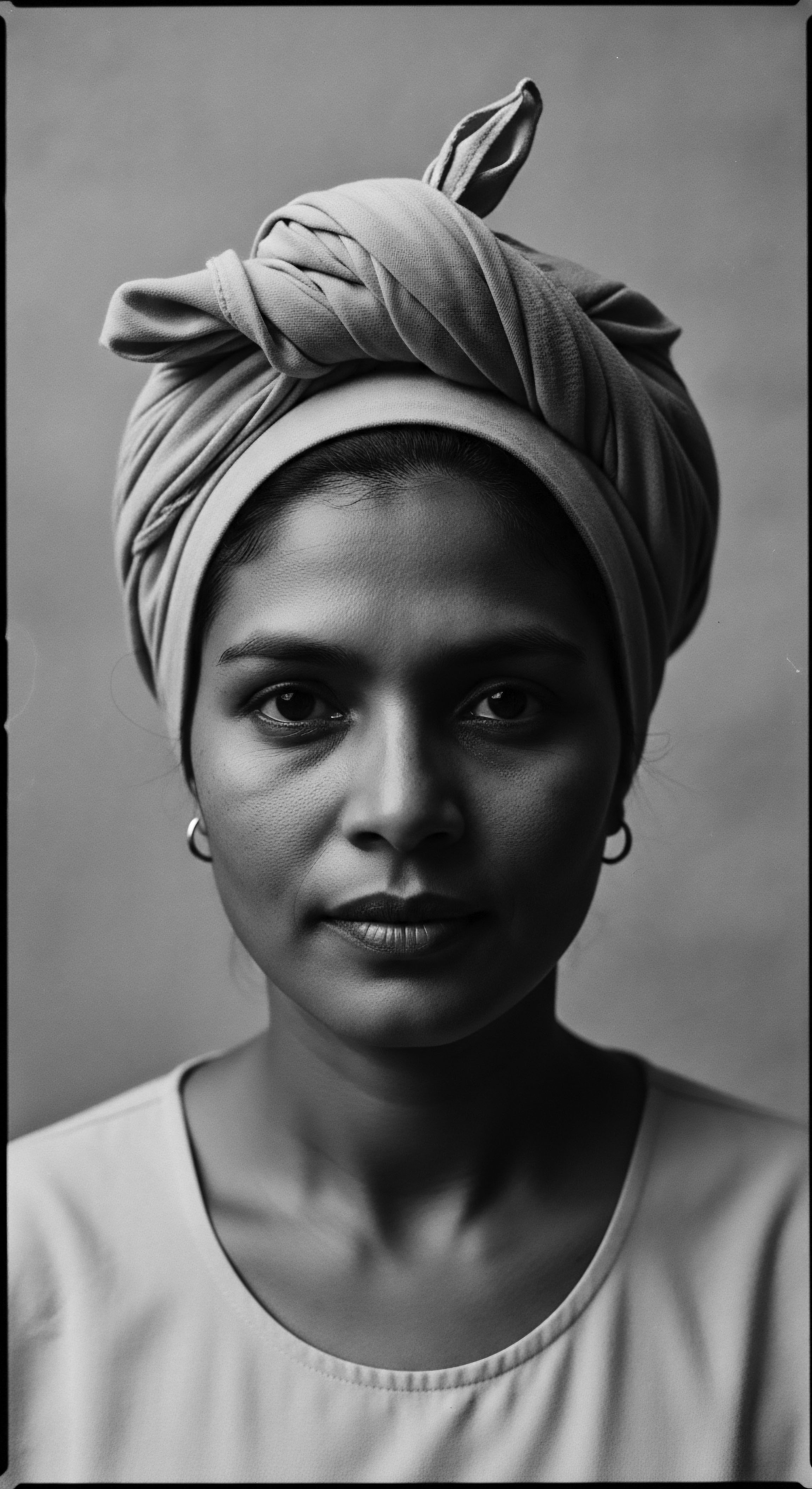
Melanin’s Ancient Pact with Textured Hair
Hair, in its fundamental structure, holds a complex biology. Within each strand, housed within the cortex, resides melanin, the pigment responsible for our hair’s deep, varied hues. This melanin is not a singular entity; rather, it manifests primarily in two forms ❉ eumelanin and pheomelanin . Eumelanin, with its rich brown to black spectrum, stands as the predominant pigment in darker hair.
Pheomelanin, displaying warmer red and yellow tones, contributes to lighter shades. The relative proportions and distribution of these two melanosome types orchestrate the unique color palette of every individual strand. It is a biological inheritance, reflecting journeys across climates and continents (Rees, 2006). For textured hair, particularly those with tighter coil patterns, a higher concentration of eumelanin is often present, reflecting an evolutionary adaptation to environments where the sun held court with unchallenged brilliance (Jablonski & Chaplin, 2014).
Eumelanin, the dark pigment prominent in textured hair, acts as a natural absorber of solar energy, a legacy of ancient climates and biological adaptation.
This inherent pigmentation acts as a natural absorber of ultraviolet (UV) radiation. Eumelanin, especially, possesses a molecular architecture designed to absorb and dissipate UV rays, preventing them from wreaking havoc on the hair’s protein structure. It scavenges the reactive oxygen species that UV exposure generates, those harmful free radicals that can degrade the hair shaft.
This protective action is a remarkable testament to the body’s adaptive wisdom, a biological inheritance tailored to human existence under varying sun intensities. Darker hair, steeped in eumelanin, exhibits greater resistance to UV-induced degradation compared to its lighter counterparts (Goddard, 2020).
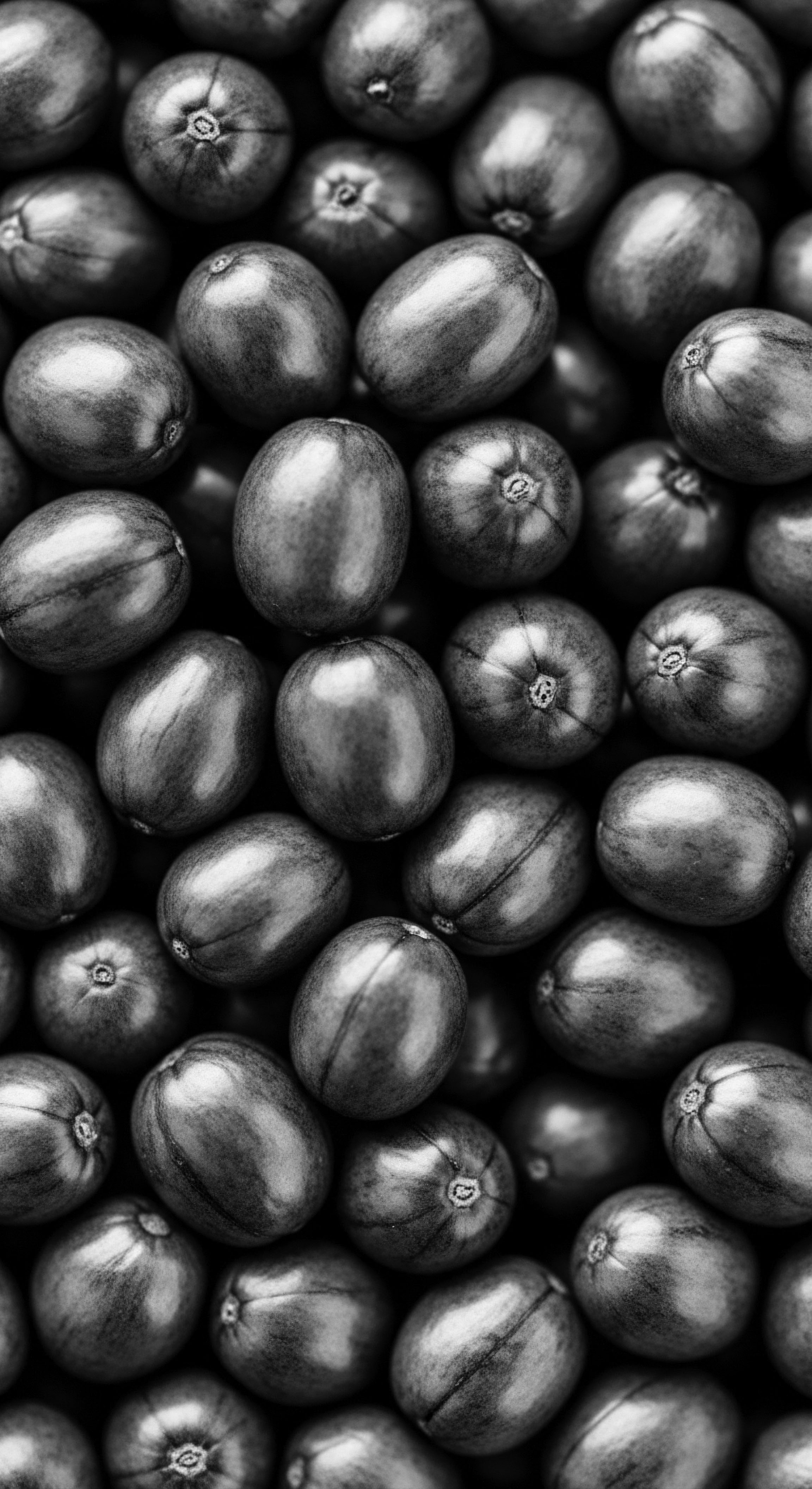
Hair’s Architecture and Solar Interaction
Beyond melanin content, the very morphology of textured hair contributes to its interaction with solar energy. The unique elliptical shape of the hair follicle, which gives rise to curls and coils, means that each strand does not present a uniform, flat surface to the sun. Instead, its intricate twists and turns create a natural, albeit microscopic, shading effect on the scalp and underlying strands. This structural advantage, paired with the internal chemical shield of eumelanin, represents a dual layer of protection.
Consider the tightly spiraled coils often found in hair of African descent ❉ these coils, rather than lying flat, create a dense canopy. This dense morphology, coupled with high eumelanin concentrations, is not a mere aesthetic; it speaks to a deep, integrated evolutionary response to thermoregulatory demands in equatorial regions (Jablonski & Chaplin, 2014). It helps reduce direct heat gain to the thermosensitive brain, a biological ingenuity born from millennia of direct sun exposure.
- Eumelanin ❉ The primary dark pigment, providing substantial UV absorption and free-radical scavenging.
- Pheomelanin ❉ The lighter, red-yellow pigment, offering less UV protection and a propensity for phototoxicity.
- Melanosomes ❉ Cellular structures housing melanin, varying in size and distribution, contributing to hair color and UV response.

Echoes in Traditional Understanding
The ancestral wisdom, passed down through oral traditions and communal practices, implicitly understood the sun’s influence, even without the language of modern science. While perhaps not articulated as “melanin’s UV absorption,” these communities developed extensive regimens rooted in observation and necessity. The hair, often viewed as a sacred extension of the spirit and identity, received diligent care aimed at preserving its vitality against environmental elements.
Long before microscopes revealed melanosomes, the power of dark hair to withstand harsh sunlight was simply lived reality. This innate understanding guided the selection of natural ingredients and the shaping of protective styles, demonstrating a profound, intuitive grasp of hair’s elemental capabilities.
| Melanin Type Eumelanin |
| Color Contribution Brown to Black |
| Protective Role against UV High absorption of UV rays; effective free-radical scavenger. |
| Melanin Type Pheomelanin |
| Color Contribution Red to Yellow |
| Protective Role against UV Limited absorption; can be phototoxic under UV exposure. |
| Melanin Type The dominance of eumelanin in much of textured hair signifies a biological legacy of resilience against intense solar radiation. |

Ritual
The understanding of textured hair’s intrinsic resilience against the sun, rooted in its melanin content and coil structure, flowed seamlessly into the ritualistic practices of care and adornment across generations. Hair, more than a biological appendage, served as a living archive, a canvas for identity, status, and collective memory. The question of sun protection was not an isolated concern; it was integrated into a holistic approach to hair wellness, a tender thread connecting the physical and the spiritual.
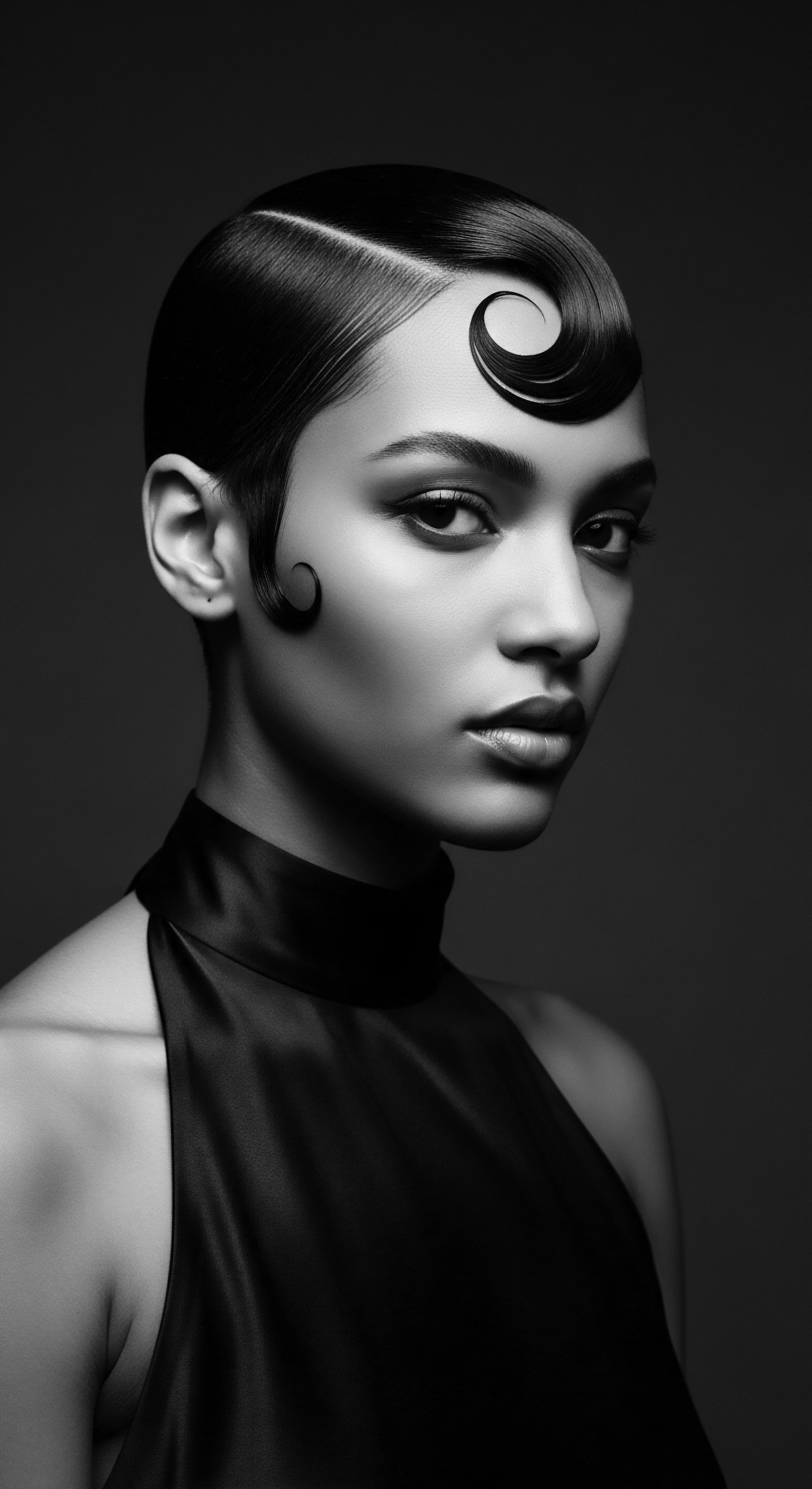
How Did Ancestral Practices Address Sun Protection?
For ancestral communities, particularly those dwelling in sun-drenched climes, head coverings were not simply sartorial choices. They embodied layers of practicality, cultural significance, and subtle defiance. Scarves, kerchiefs, and elaborate headwraps, such as the tignon mandated by law in colonial Louisiana, served a tangible purpose ❉ shielding the hair and scalp from relentless solar exposure (African American Museum of Iowa, n.d.). These coverings prevented excessive drying, mitigated direct UV impact, and helped preserve the integrity of strands that were constantly exposed to the elements during daily life or labor.
The tignon, initially a symbol of forced subjugation, was transformed through ingenious artistry into a vibrant expression of identity and resistance, adorned with exquisite fabrics and arrangements, turning a tool of oppression into one of self-assertion (Byrd & Tharps, n.d.). This transformation speaks volumes about the indomitable spirit of those who wore them, their ability to find beauty and strength amidst hardship, even in the act of covering hair.
Beyond coverings, the very act of styling served as a protective ritual. Many traditional styles, often intricate and time-intensive, functioned as a shield. Braids, cornrows, and twists, for instance, tucked the delicate ends of hair away, minimizing environmental exposure and preventing breakage. These styles held deep cultural meaning, denoting marital status, age, or tribal affiliation (Byrd & Tharps, n.d.).
They were not simply aesthetic choices, but strategic forms of preservation. The labor involved in their creation often served as a communal bonding experience, where wisdom and techniques were passed from elder to youth, cementing familial and community ties while simultaneously protecting the physical strand.

Traditional Ingredients as Protective Elixirs
The bounty of the earth provided ancestral communities with potent elixirs for hair health and protection. Before the advent of modern chemistry, traditional ingredients acted as a vital defense against environmental stressors, including the sun. Shea butter, a venerable staple in West Africa, has been revered for centuries for its moisturizing and protective qualities.
Rich in fatty acids and vitamins, it formed a protective film on the hair shaft, helping to ward off dryness and damage from solar radiation (Healthline, 2024). This natural balm, worked into the hair and scalp, sealed in moisture and offered a physical barrier, complementing melanin’s internal shield.
Other natural oils, such as palm oil, coconut oil, or castor oil, were also widely used across various African and diasporic traditions. These oils were employed not just for luster, but for their ability to coat the hair, reducing porosity and environmental penetration. Their application was a mindful act, often accompanied by massage, stimulating the scalp and promoting robust hair growth—a practice rooted in a holistic view of well-being where hair was connected to the vitality of the entire body. The wisdom of these natural ingredients, their efficacy observed and refined over generations, provides a timeless blueprint for nourishing and guarding textured hair.
- Shea Butter ❉ A West African staple, used for centuries to moisturize and protect hair from sun and environmental damage.
- Palm Oil ❉ A traditional oil used for conditioning and adding a protective layer to the hair.
- Coconut Oil ❉ A widely used emollient that penetrates the hair shaft, offering conditioning and some barrier protection.
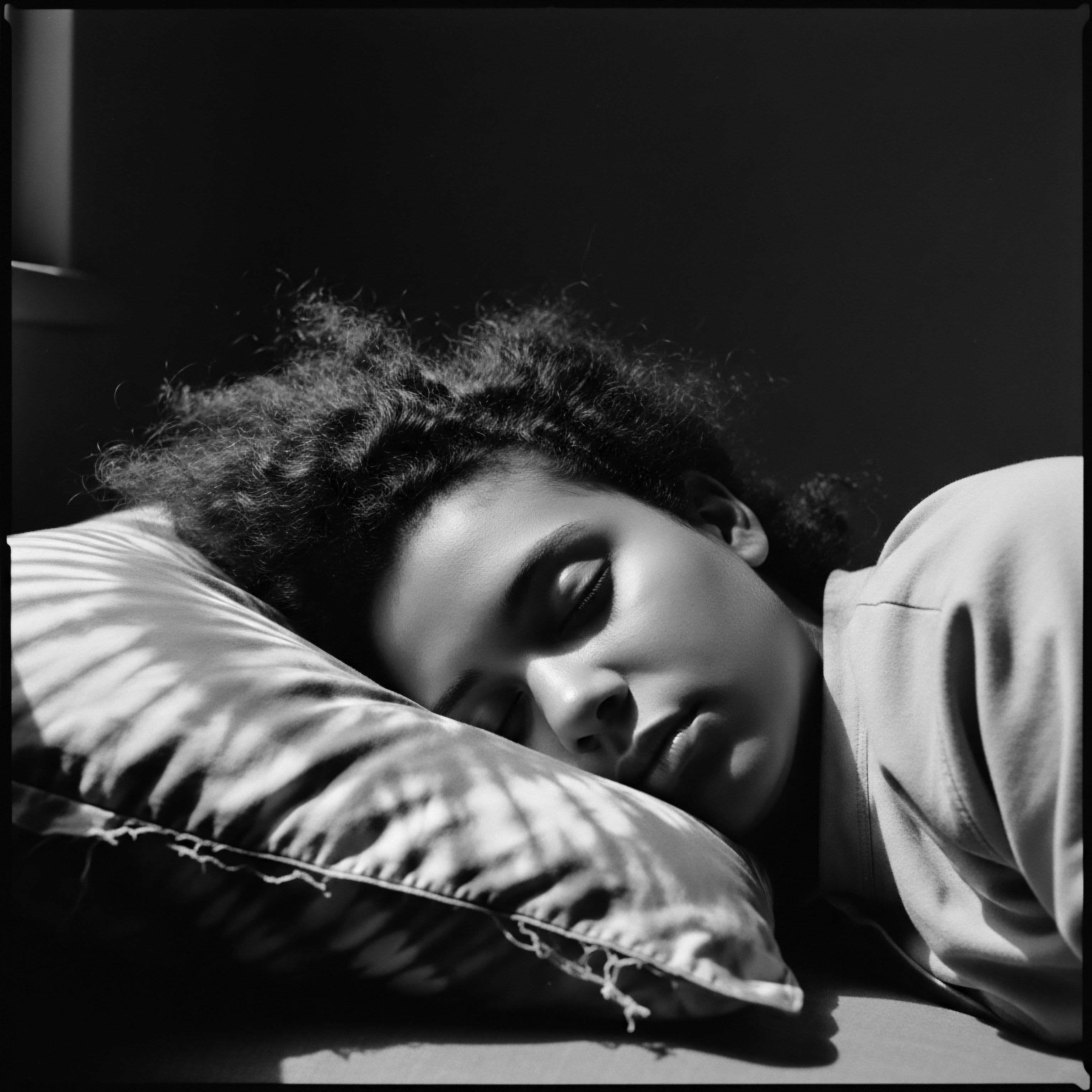
Relay
The historical journey of textured hair, from its evolutionary origins to its place within ancestral rituals, leads us to the present moment. We stand at a crossroads where the wisdom of the past, gleaned from heritage, converges with the rigor of contemporary science. The question of whether textured hair’s natural melanin provides an absolute shield against sun damage reverberates with new depth, prompting a deeper investigation into its nuances and implications for modern care practices.

Understanding Melanin’s Protective Capacity
While melanin, particularly the darker eumelanin, bestows significant photoprotection upon hair, the scientific consensus is clear ❉ this protection is not absolute or infinite. Melanin works by absorbing UV radiation, converting it into heat, and neutralizing free radicals generated by sun exposure (LearnSkin, 2020). This is a dynamic process, and during this activity, the melanin itself undergoes degradation, a chemical transformation that can lead to lightening and weakening of the hair shaft over time.
The hair, similar to the skin, experiences oxidative stress from prolonged or intense UV exposure. The protective capabilities of melanin are undeniably robust, an inherent biological advantage, yet they possess a finite capacity for defense before signs of damage manifest.
Hair melanin, while providing significant defense, is not an impenetrable barrier against all solar assault; its protective capacity is active and can diminish with persistent exposure.
Studies show that even darker hair, rich in eumelanin, can suffer from sun damage, manifesting as dryness, brittleness, and a loss of structural integrity (Richardson-Ampaw, 2023). The hair cuticle, the outermost protective layer of the strand, can be compromised, leading to increased porosity and vulnerability. The natural lipid barrier of the hair can also be stripped, exacerbating moisture loss. This scientific understanding reaffirms what observant ancestors likely recognized through the weathering of exposed hair over seasons ❉ that while hair possessed innate defenses, external protection and replenishment were indispensable.
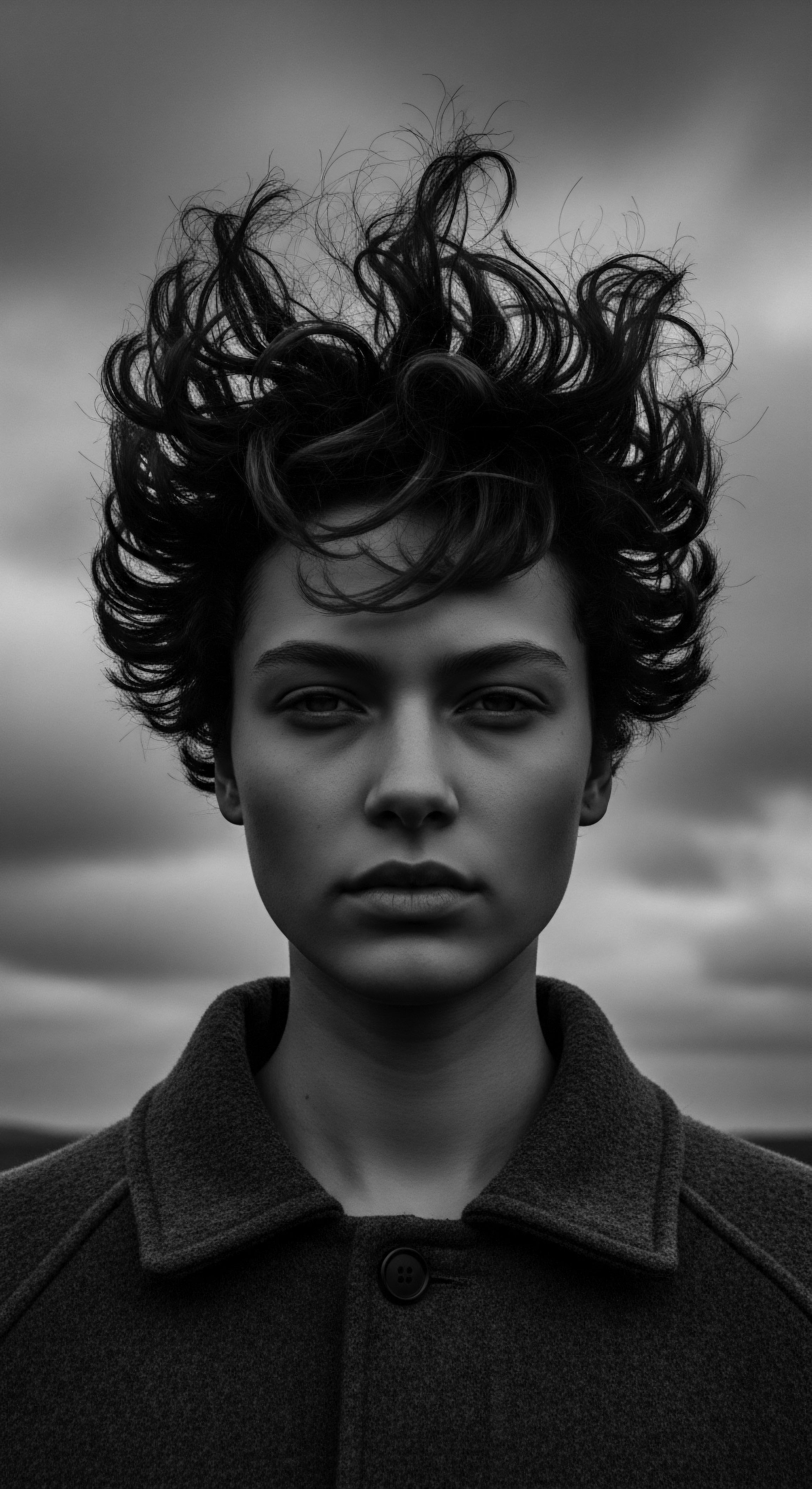
Modern Science and Ancestral Practices
The contemporary understanding of melanin’s role does not negate ancestral practices; rather, it often provides scientific validation for their efficacy. The traditional use of natural oils and butters, for example, forms a physical barrier that supplements melanin’s internal defense, reducing direct UV penetration and mitigating moisture loss. This layering of protection, both internal and external, reflects an intuitive holistic approach that modern science now increasingly advocates.
Consider the evolution of protective styling. While rooted in aesthetics and cultural identity, these styles have a scientific underpinning for their continued relevance in sun protection. Styles like braids, twists, and locs reduce the surface area of individual strands exposed to the sun.
When worn for extended periods, they minimize daily manipulation, further preserving hair health. This deliberate act of sequestering and securing the hair echoes the ancient practice of head coverings, demonstrating a continuous lineage of care that prioritizes preservation.
The ancestral wisdom that championed plant-based ingredients for hair wellness gains scientific support through studies on antioxidants and their role in mitigating UV damage. Many traditional plant oils and butters contain vitamins and compounds that possess antioxidant properties, which help to neutralize the free radicals that melanin sacrifices itself to combat. The synergistic relationship between the hair’s intrinsic melanin and externally applied natural protectants reveals a continuity of care philosophy across millennia.
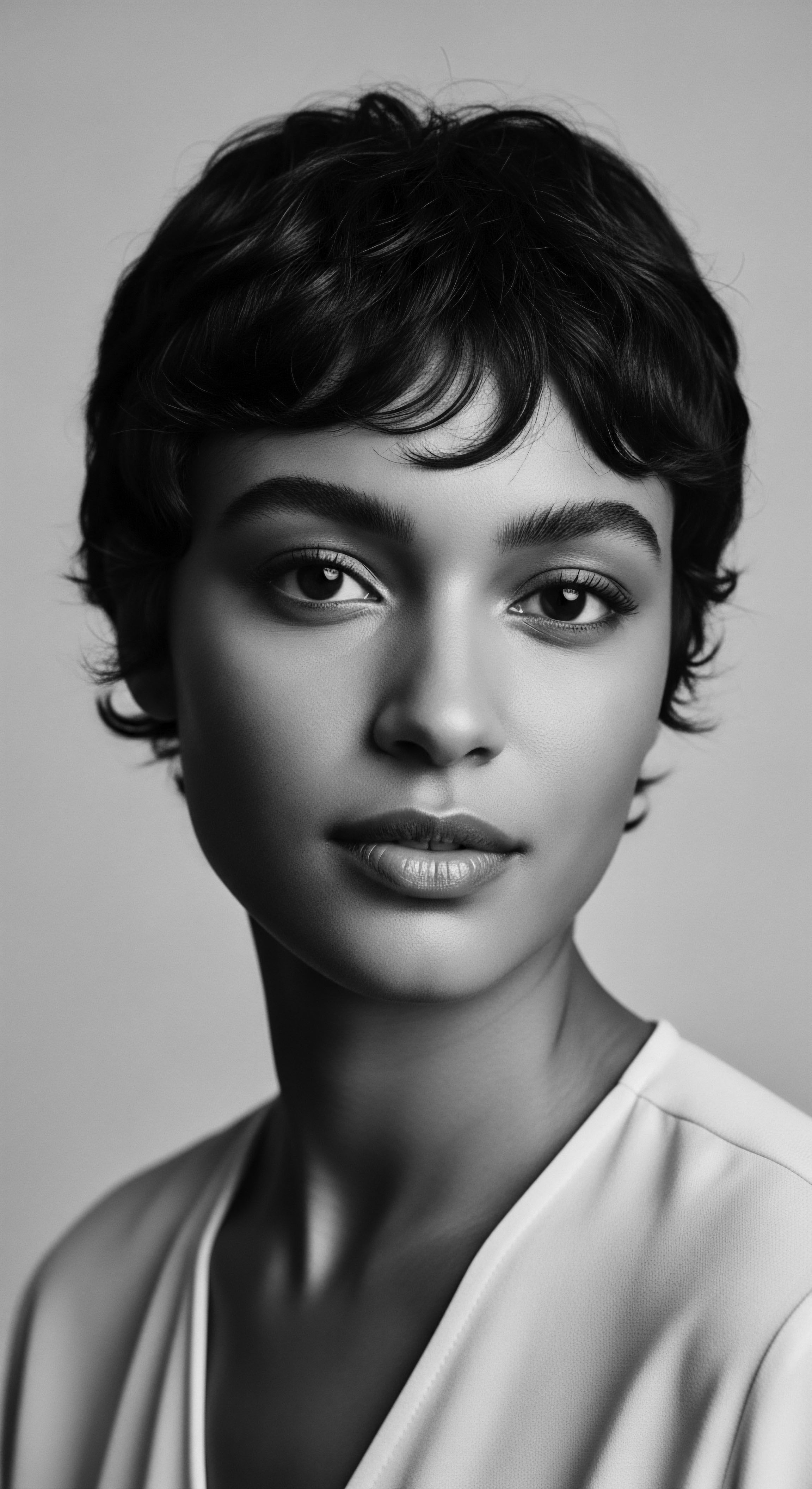
Adapting Care for Contemporary Living
In today’s world, where varied lifestyles intersect with historical hair realities, adapting care practices for sun protection is paramount. This involves a conscious fusion of ancestral wisdom with contemporary advancements. While hats and scarves remain potent tools, their modern counterparts – wide-brimmed hats, stylish headwraps, and even UV-protective hair products – offer diverse options for defense. The emphasis shifts from an expectation of absolute melanin shield to a strategy of proactive, layered protection.
| Aspect of Protection Innate Pigment Shield |
| Ancestral Understanding / Practice Observed resilience of darker hair; reliance on natural properties. |
| Modern Scientific Insight Eumelanin absorbs UV; offers significant, but not total, photoprotection. |
| Aspect of Protection External Barriers |
| Ancestral Understanding / Practice Use of headwraps, scarves, and hats for physical covering. |
| Modern Scientific Insight Physical barriers provide direct blockage of UV radiation, preventing degradation. |
| Aspect of Protection Protective Styles |
| Ancestral Understanding / Practice Intricate braids and twists for daily activity and spiritual significance. |
| Modern Scientific Insight Minimize exposed surface area and reduce daily manipulation, preserving strand integrity. |
| Aspect of Protection Natural Oils & Butters |
| Ancestral Understanding / Practice Application of shea butter, palm oil for conditioning and sheen. |
| Modern Scientific Insight Forms a physical film, reduces porosity, and some ingredients offer antioxidant properties. |
| Aspect of Protection The enduring wisdom of heritage practices finds powerful validation in contemporary scientific discovery, advocating for comprehensive hair care. |
The question, then, is not whether melanin entirely shields, but rather, what measures we can take to honor its protective legacy and bolster it further. This necessitates an approach to hair care that respects its unique biology while acknowledging the environmental stressors of modern life. It calls for hydration, proper cleansing, and the consistent use of both natural and scientifically formulated products that support the hair’s inherent strength. The dialogue between heritage and science here strengthens our collective understanding, enabling us to preserve the radiant health of textured hair for generations yet to come.
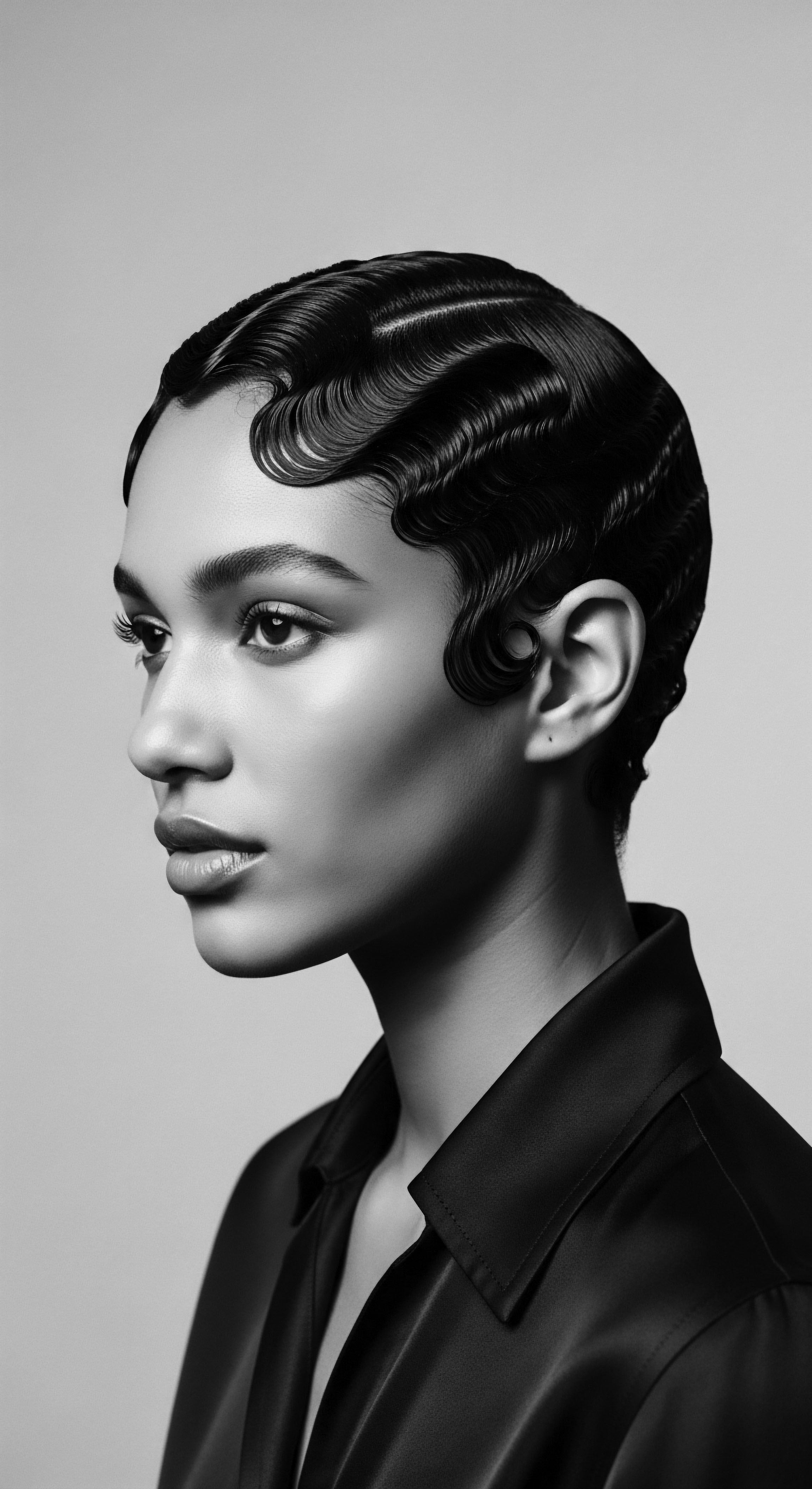
Reflection
The journey through the very strands of textured hair, from its elemental biological composition to its deep heritage of care, reveals a profound truth. The natural melanin within these remarkable coils and spirals, a gift passed through countless generations, indeed provides a robust shield against the sun’s persistent presence. It is a testament to the adaptive ingenuity of life, a biological narrative etched into every pigment granule.
Yet, the wisdom gleaned from both ancestral practices and modern scientific inquiry whispers a nuanced message ❉ while powerful, this shield is not an impenetrable wall. The sun, a primal force, still leaves its mark, subtly altering the hair’s structure and vibrancy over time.
The understanding that emerges from this exploration is one of continuity and reverence. It reinforces the idea that true hair wellness is not about seeking absolute imperviousness, but about cultivating a living relationship with our strands. It is about honoring the inherent strength melanin bestows, while also embracing the protective rituals—ancient and contemporary—that sustain its vitality. This conversation about sun damage, rooted in the heritage of textured hair, invites us to look beyond simplistic answers.
It prompts us to appreciate the delicate balance between innate resilience and intentional care, reminding us that every coiled strand holds not only pigment, but also a legacy of resilience, adaptation, and beauty that continues to unfold, one luminous helix at a time. The Soul of a Strand, truly, is an archive, a living testament to a profound history, always adapting, always enduring.

References
- African American Museum of Iowa. (n.d.). History of Hair.
- Byrd, A. & Tharps, L. L. (n.d.). Hair Story ❉ Untangling the Roots of Black Hair in America.
- Goddard, N. (2020). Melanin ❉ How does it affect hair? Healthline.
- Jablonski, N. G. & Chaplin, G. (2014). The Evolution of Skin Pigmentation and Hair Texture in People of African Ancestry. Evolutionary Biology, 41(3), 335–347.
- LearnSkin. (2020). Photo Protection for Hair ❉ Protect Your Hair From UV Sunlight.
- Rees, J. (2006). The genetics of hair color. Annual Review of Genetics, 40, 235-263.
- Richardson-Ampaw, E. (2023). Sun, Sea and Afro Hair. Black Skin Directory.
